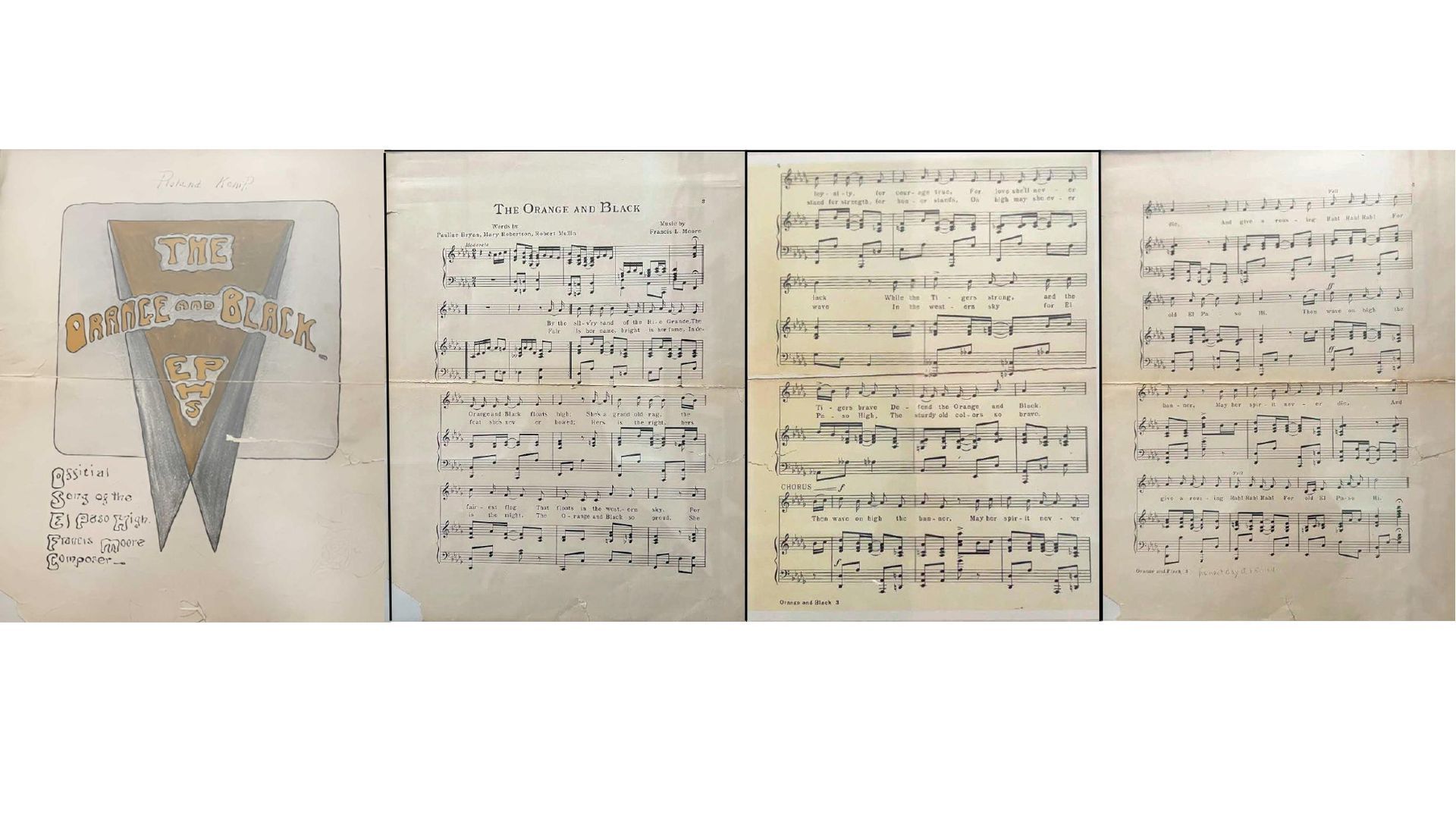Francis L. Moore
(1886-1946)
El Paso's First concert Pianist

Francis Lee Moore was born in Sherman, Texas, in 1886, the son of Francis Marion Moore and Ann (Wilson) Moore. In 1886, the family moved to El Paso for health reasons, settling in what was then a small but rapidly growing border town. From this remote frontier setting would emerge one of Texas’s first internationally recognized concert pianists.
Moore’s earliest piano instruction came from Ferdinand Dewey, a respected musician who had relocated to El Paso for his health. After Dewey’s death in 1900, the young pianist left for Chicago to study under William H. Sherwood, one of the most distinguished American piano pedagogues of the late nineteenth century. Moore graduated from the Sherwood Music School in 1904, earning praise for his poetic expressiveness and refined artistry even as a teenager.
From 1909 to 1914, Moore returned to El Paso to teach and perform, quickly becoming a central figure in the city’s growing musical life. He gave recitals at local venues such as Hadley Hall and First Baptist Church and frequently accompanied visiting artists. In 1912 he married Gertrude Ellis, also of El Paso. His reputation as an accompanist soon extended beyond Texas, leading to his appointment as pianist for the celebrated violinist Maud Powell, America’s foremost female virtuoso of the era. Between 1913 and 1915, Moore toured nationally with Powell, appearing at prestigious venues including New York’s Aeolian Hall, and Powell performed his own composition, Caprice, to great acclaim.
In 1915, Moore joined the faculty of the American Institute of Applied Music in New York City. There he became accompanist for some of the world’s most distinguished musicians, including Johanna Gadski, Fritz Kreisler, Mischa Elman, and Efrem Zimbalist. His song Swing Song (1916), performed by Gadski at Carnegie Hall, was among several of his published works.
Moore made his solo debut at Aeolian Hall on October 10, 1921, earning high praise from prominent critics such as Noel Straus and Deems Taylor for his sensitive interpretations of Chopin, Schumann, Brahms, and Fauré. Over the next two decades, he performed with major orchestras, including the Detroit Symphony, and gave recitals in cities across the United States. Despite his national success, Moore remained closely connected to his hometown, returning often to perform in El Paso, where his sister Kate Moore Brown was a leader in the city’s cultural and educational life.
In 1940, Moore suffered a debilitating stroke that left him partially paralyzed. He remained in New York, where he continued teaching privately until his death in 1946. His obituary in The New York Times recognized him as one of the leading pianists and teachers of his generation, noting that he had performed for President Woodrow Wilson and the great pianist Ignacy Jan Paderewski.
Francis Moore is buried in Evergreen Cemetery in El Paso, beside his sister, Kate Moore Brown, completing the circle of a family whose musical influence helped shape the artistic foundations of the city. As music historian Dr. Robert Stevenson wrote, Moore stands as “El Paso’s first concert pianist” and one of Texas’s earliest classical artists to achieve national recognition.
Content from El Paso County Historical Society

El Paso High School's Fight song
El Paso High School's fight song "The Orange and Black" comes from their Alma Mater. It is the oldest written high school fight song in El Paso, Texas and is one of the oldest fight songs in the State of Texas.
El Paso High School and Jefferson High School are the only high schools in El Paso, Texas with original fight songs. The other high schools (including Austin) adopted their fight songs from
colleges.
"The Orange and Black” (now known as the Alma Mater) was dedicated to the school for the school colors which had become traditional some years earlier. The Composer was Francis
Moore, who was the brother of Kate Moore who was in the first graduating class from Central School in 1887. Mr. Moore would go on to become a concert pianist, composer and teacher.
(1st verse)
By the silvery sands of the Rio Grande,
The Orange and Black floats high;
She’s a grand old rag, the fairest flag,
That floats in the Western sky.
For loyalty, for courage true,
For love she’ll never lack,
While the Tigers strong and the Tigers brave
Defend the Orange and Black
(2nd verse)
Fair is her name, bright is her fame,
In defeat she’s never bowed;
Hers is the right, hers is the might,
The Orange and Black so proud.
She stand for strength, for honor stands,
On high may she ever wave
In the Western sky for El Paso High
The sturdy old colors so brave
(chorus)
Then wave on high the banner.
May its spirit never die;
And give a rousing “rah, rah, rah!”
For old El Paso Hi
Then wave on high the banner.
May its spirit never die;
And give a rousing “rah, rah, rah!”
For old El Paso Hi
Original Alma Mater
El Paso High School
All hail to thee.
Thy name forever
A guiding light shall be.
Strong as the mountains,
Our love will never fail.
To thee, Alma Mater,
Hail, hail, hail.
